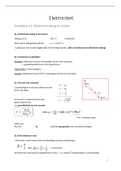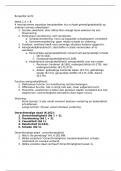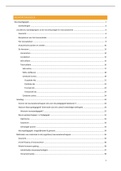Samenvatting
Summary Human Biology - H2
- Vak
- Human biology
- Instelling
- Katholieke Universiteit Leuven (KU Leuven)
Deze samenvatting voor Human Biology omvat boek, slides en lesnota's. Titels zijn duidelijk in kleur aangebracht, en de te kennen figuren zijn stuk voor stuk opgenomen. De tekst is in het Engels geschreven. Veel succes, voor mij heeft het gewerkt ;-) !
[Meer zien]






